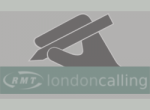The European Trade Union Confederation (ETUC) survey on gender equality - known as the "8th March Survey" has been released. The survey, completed by unions across Europe, shows that of the unions which could indicate women membership numbers; of 44 million members, 44.2% are women. yet the results reveal that of the 39 presidents "within national confederations"; only 4 or 10.3% are women.
WHO REPLIED
• 51 (out of 85) national confederations from 31 European countries.
• 20 sectoral national unions from 12 European countries.
• 6 European Trade Union Federations (out of 10) .
PART I: WOMEN IN TRADE UNION MEMBERSHIP AND LEADERSHIP POSITIONS
Trends of female membership in national trade union confederations
• 47 confederations were able to indicate the number of women members.
• They represent 44,393,073 members, of which 19,624,693 are women (44.2%).
• The national confederations with the highest rates of female membership are STTK-Finland (75%), followed by the Latvian union LBAS (65%) and the Estonian union EAKL (62%).
• The lowest percentage of female members is reported by the two Turkish confederations: TURK-IS (13%) and HAK-IS (11%) and DEOK-Cyprus (13,7%).
• 12 unions reported more female than male members: EAKL-Estonia, AKAVA and STTK from Finland, ICTU – Ireland, LBAS-Latvia, LPSK from Lithuania, LO and UNIO from Norway, CGT-Portugal, SACO and TCO from Sweden and TUC-UK.
• 27 confederations (out of 47) have a female membership rate equal to or higher than 44.2%.
• Women have slowed down over the last years the process of decline faced by unions in a majority of countries in Europe. The growth in female membership does not compensate for the loss of male membership but avoids a steeper decline in union membership.
Women in positions of power within trade unions:
• For all the position of power within national confederations, the women are in minority compared to men:
4 female Presidents (against 35 for men)
18 female Vice-Presidents (against 51 for men)
9 female General Secretaries (against 27 for men)
7 female Deputy General Secretaries (against 13 for men)
9 female treasurers (against 16 for men)
• Only 7 women have a leadership position in their national confederation (47 are men).
• Most of national confederations have implemented actions and/or policies ensuring the follow-up of ETUC Recommendations for improving gender balance.
PART II: TRADE UNION STRATEGIES TO ADRESS VIOLENCE AGAINST WOMEN
• A large majority of unions in Europe implement address the issue of violence against women.
• Sexual and moral harassment are the two forms of violence mostly addressed by unions. Workplace violence is more tackled than domestic violence.
• Most of unions address gender equality in collective bargaining agreements, but only few have incorporated the specific issue of violence against women. Workplace agreements on domestic violence were concluded in Spain and UK.
• Most confederations and all the ETUFs have carried out different sorts of bipartite initiatives (negotiations, recommendations, joint declarations, trainings, awareness raising events, etc.) with employers to address the issue of violence against women.
• Most of unions take part in tripartite discussions at national level to address the issue of violence against women. The involvement can take different forms: participation in a governmental body, speaking during public consultations or hearings, taking part in national-led programmes / campaigns, etc. Unions can be involved in the different steps of the decision-making process: elaboration, promotion, monitoring and co-management.
• A majority of ETUC members have adopted a political document addressing the issue of violence against women over the last years: a political statement, a resolution / motion, an action plan setting out a set of concrete actions to undertake.
• A majority of unions have never carried a project on the issue of violence against women. Nonetheless, many reported being or having been partner in a project promoted by other actors.
• A significant number of unions have organised public events to discuss the issue of violence against women.
• A majority of unions have published studies, brochures, trade unions’ manuals, awareness raising leaflets on the issue of violence against women. References of more than 20 trade unions’ publications from 15 EU different countries are provided.
• Few unions have undertaken a survey on gender-based violence among members. Where surveys were carried, results give a bleak and appalling overview of violence faced by women at work place level and in society.
• Nearly half of unions has taken part in demonstrations, parades, events aimed at raising awareness on violence against women.
• The International Day for Elimination of Violence against Women (25th November) represents a key opportunity for the majority of unions to participate or promote awareness raining events in this field.
• A large majority of unions cooperate with other confederations at national level to address the issue of violence against women. Many confederations involve their affiliate members at regional, local and/or sectoral level in gender-related projects.
• A substantial number of confederations and national federations cooperate with civil society organisations in the field of violence against women.
- 5082 reads




